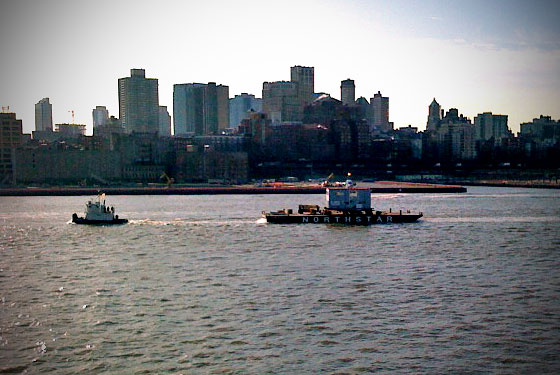
Commuters driving over the Brooklyn Bridge around 8:20 a.m. today may have been jolted awake by a strange sight — a gleaming, cube-shaped piece of architectural history being pulled along the East River on a barge. The building, a 1967 beach house designed by Robert Venturi and his wife, Denise Scott Brown, had been slated for demolition in New Jersey when a Long Island couple, Deborah Sarnoff and Robert Gotkin, saved it from developers last month by convincing authorities to let them ship it to their Glen Cove property. The price? One dollar for the house, $100,000 for the transportation.
“It’s wonderful to see that these people worked so hard to save the house,” said Venturi, who with his wife watched the building chug by from a platform at South Street Seaport. Known as Lieb House, after the first owners, the structure is an early example of the kind of irreverent architecture that made Venturi one of the most influential — and controversial — architects of the postwar era. Lieb House, which Venturi once proudly described as “a bold little ugly banal box,” was an early working-out of his ideas about incorporating ordinary, vernacular elements into his work.




